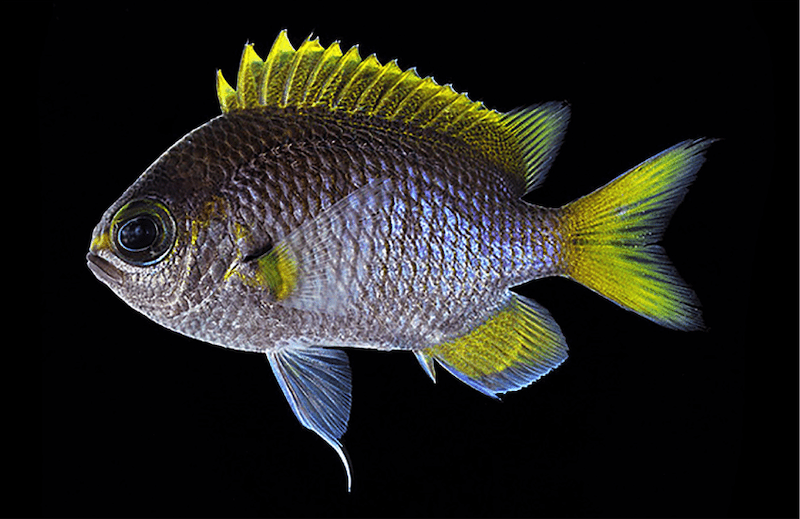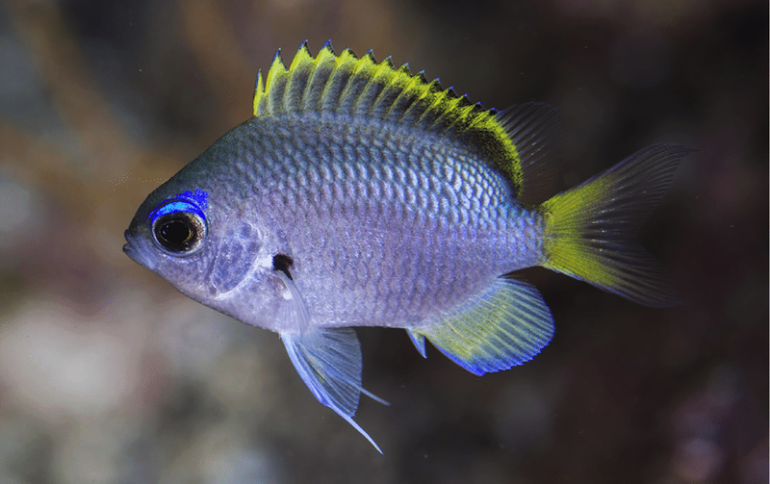Rare fish retailer Unique Fins has informed Reef Builders that it has received two specimens of the super rare deep-water Moonstone Chromis from Japan. First described in 2019 by Yi-Kai Tea, Anthony Gill, and Hiroshi Senou, Chromis tingting was described based on one holotype and three paratypes collected from Sagami Bay, Southern Japan. The holotype was collected in 2012.
Chromis tingting frequents waters 50-60 meters deep but has been found as deep as 86 meters and as shallow as 25 meters. Despite there being over 100 species of Chromis, only perhaps a dozen shallow water species are regularly traded for the aquarium hobby, yet 34 species occur at depths over 50 meters, the Moonstone Chromis being one of them. A deepwater dream tank for someone, Chromis tingting lives in Mesophotic Coral Ecosystems alongside other deepwater collectibles including Sacura, Pseudanthias, Tosanoides, and Pseudolabrus.

It has previously been confused with Chromis mirationis, with which it shares several character combinations, and the authors investigate its relationship to three other Chromis species, mirationis, okamurai, and struhsakeri. Chromis tingting is named in honor of Yi-Kai Tea’s mother and given the Common name of Moonstone Chromis referring to the pearlescent, silvery-blue coloration of the juveniles and adults of this species. Kai says that in the wild they live in loose groups or pairs, which is good when you consider this fish’s pricetag!
Jake Adams introduced the new species in April 2019, and the full species description can be accessed here 10.11646/ZOOTAXA.4586.2.2
Fish for sale
Unique Fins have two Moonstone Chromis, the largest of which is 2.5” in length. The smaller one has already been sold to a private collector in California. It sold for $3000. The specimens were caught at a depth of 60 meters by deep divers. Both are feeding on pellets and mysis, and have had the temperature raised to 74F. Unique Fins also proclaimed the $6000 deepwater Chromis okamurai we featured in 2023.



